EMS Guided Biofilm Therapy: The Future of Dental Cleanings at Dorset Dental in Scarborough
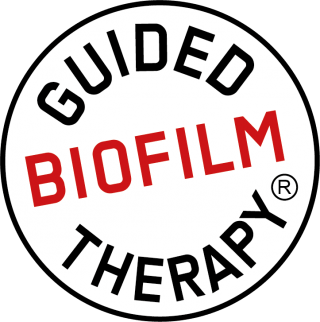
If you’re looking for a modern and effective dental cleaning in Scarborough, look no further than Dorset Dental. EMS Guided Biofilm Therapy (GBT) is changing the way we approach dental hygiene, offering gentler, more efficient cleanings that deliver superior results. This cutting-edge dental technology is available at Dorset Dental in Scarborough, where our certified dental hygienists are committed to providing the best dental care possible. What is EMS Guided Biofilm Therapy (GBT)? EMS Guided Biofilm Therapy (GBT) is an innovative dental cleaning protocol that focuses on removing harmful biofilm, plaque, and stains without the need for traditional scaling. GBT uses state-of-the-art technology like AIRFLOW®, PERIOFLOW®, and PIEZON® to effectively clean teeth, gums, and difficult-to-reach areas. This technology helps to prevent cavities, gum disease, and other oral health issues by targeting biofilm, the root cause of many dental problems. At Dorset Dental, our Scarborough dentists use this advanced method to give patients a more efficient, comfortable, and thorough cleaning. The 8-Step GBT Protocol at Dorset Dental The EMS Guided Biofilm Therapy protocol is carefully designed to ensure optimal results for your oral health: Assessment – Our team evaluates your oral health and identifies biofilm with a disclosing agent. Disclosure – A colored solution highlights the areas of biofilm, making them easy to target. Motivation – We provide personalized oral hygiene education based on the biofilm patterns we’ve discovered. AIRFLOW® Cleaning – A high-precision jet of air, water, and fine powder gently removes biofilm, stains, and soft plaque from teeth, crowns, and other restorations. PERIOFLOW® Therapy – We use this step to clean deep periodontal pockets and hard-to-reach areas around implants and teeth. PIEZON® Scaling – Any remaining tartar is carefully removed using an ultrasonic scaler. Final Check – Our dentists and hygienists recheck your teeth and gums to ensure all biofilm and tartar have been removed. Recall & Maintenance – We offer you a tailored prevention plan to help maintain your oral health between visits. Why Choose EMS Guided Biofilm Therapy at Dorset Dental in Scarborough? 1. Enhanced Patient Comfort GBT is designed to be less abrasive than traditional cleaning methods. The use of warm water and fine powder ensures a gentler experience for patients, making cleanings more comfortable for those with sensitive teeth or gums. 2. Highly Effective Biofilm Removal Biofilm is a major contributor to cavities, gum disease, and bad breath. GBT helps eliminate biofilm and bacteria more effectively than traditional methods, ensuring better protection for your oral health. 3. Safe for Implants, Braces & Veneers Whether you have braces, dental implants, or veneers, GBT is safe for all dental work. It provides a thorough clean without risking damage to your restorations. 4. Faster and More Efficient Cleanings GBT is more efficient than traditional cleanings, meaning less time in the dentist’s chair and better results. Our patients experience quicker, more precise cleanings, helping you get back to your day sooner. 5. Ideal for Families GBT is suitable for patients of all ages, making it the perfect choice for family dental care in Scarborough. Whether you’re bringing your child in for their first cleaning or maintaining your own oral health, GBT offers a comprehensive solution for everyone. Book Your EMS Guided Biofilm Therapy Appointment at Dorset Dental in Scarborough If you’re looking for a dentist in Scarborough who offers the most advanced dental cleaning methods, Dorset Dental is the place to go. Our team of certified hygienists uses EMS Guided Biofilm Therapy to provide a gentle, effective, and thorough dental cleaning that keeps your smile bright and your gums healthy. Contact Dorset Dental Today! 📍 Location: 119 Dorset Road, Scarborough, ON M1M 2S9📞 Call Us: (416) 261-2946🌐 Website: www.dorsetdental.com Experience cutting-edge dental care at Dorset Dental in Scarborough, and enjoy the benefits of EMS Guided Biofilm Therapy for your next dental cleaning!
How To Treat Sleep Apnea Patients With An Oral Appliance

Oral appliances can help manage sleep apnea by keeping the airway open during sleep. These devices are custom-fitted by dental professionals. Sleep apnea is a common disorder where breathing repeatedly stops and starts during sleep. Oral appliances, often recommended for mild to moderate cases, work by repositioning the jaw to maintain an open airway. These devices are an effective alternative for patients who find CPAP machines uncomfortable. Custom-fitted by a dentist, oral appliances are designed for comfort and ease of use. They are portable, making them convenient for travel. Regular follow-ups with a healthcare provider ensure the device remains effective and comfortable. Oral appliances offer a non-invasive solution, improving sleep quality and overall health for sleep apnea patients. Oral Appliances For Sleep Apnea Oral appliances offer a comfortable solution for sleep apnea patients. These devices help maintain open airways, improving sleep quality. Custom-fitted options ensure effective and personalized treatment. Living with sleep apnea can be exhausting, but there are solutions to help manage this condition. One effective treatment option is using oral appliances. Let’s dive into the world of oral appliances for sleep apnea. What Are Oral Appliances? Oral appliances are custom-fitted devices designed to help keep your airway open while you sleep. These devices are particularly effective for mild to moderate sleep apnea. How Do They Work? Oral appliances work by repositioning the lower jaw and tongue. Here’s a brief explanation of their mechanics: Jaw repositioning: Keeps the airway open by moving the lower jaw forward. Tongue stabilization: Prevents the tongue from blocking the airway. Increased airway space: Enhances breathing efficiency during sleep. Benefits Of Oral Appliances Utilizing oral appliances offers several advantages. Here are some key benefits: Non-invasive: Avoids the need for surgery. Comfortable: Custom-fitted for a better night’s sleep. Portable: Easy to carry while traveling. Quiet: Unlike CPAP machines, they make no noise. Types Of Oral Appliances There are various types of oral appliances available for sleep apnea patients. Each type serves a specific function: Mandibular Advancement Devices (MADs): Move the lower jaw forward. Tongue Retaining Devices (TRDs): Hold the tongue in place. Hybrid Appliances: Combine features of both MADs and TRDs. How To Get Fitted Getting fitted for an oral appliance involves a few key steps. Here’s what to expect: Consultation: Discuss your symptoms with a sleep specialist. Custom fitting: Impressions of your teeth are taken. Adjustment: Fine-tuning the appliance for comfort and effectiveness. Follow-up: Regular check-ups to ensure the device is working correctly. Maintenance And Care Proper care for your oral appliance is crucial for its longevity and effectiveness. Here’s how to maintain it: Daily cleaning: Use a soft toothbrush and mild soap. Regular inspections: Check for wear and tear. Storage: Keep in a protective case when not in use. Professional cleaning: Periodic cleanings by your dentist. Potential Side Effects While oral appliances are beneficial, they may have some side effects. Here are a few to be aware of: Jaw discomfort: Initial soreness is common. Tooth movement: Minor shifts in teeth alignment. Dry mouth: Some users experience increased dryness. Salivation: Excessive salivation may occur initially. Who Can Benefit? Oral appliances are suitable for many individuals. They are particularly beneficial for: Mild to moderate sleep apnea patients: Ideal for less severe cases. CPAP intolerant individuals: An alternative for those who cannot tolerate CPAP machines. Frequent travelers: Convenient for on-the-go use. By understanding these aspects of oral appliances, you can make an informed decision about your sleep apnea treatment in Scarborough. Oral Appliances For Sleep Apnea Oral appliances for sleep apnea are custom-fitted devices worn during sleep. They help keep the airway open and reduce snoring, benefiting sleep apnea patients significantly. Sleep apnea is a serious condition affecting millions. One effective treatment option is the use of oral appliances. These devices can significantly improve sleep quality and overall health. Oral appliances are custom-made devices worn during sleep. They help keep the airway open and reduce sleep apnea symptoms. Types Of Oral Appliances Several types of oral appliances are available. Here’s a closer look at the most common ones: Mandibular Advancement Devices (MADs): These devices move the lower jaw forward to keep the airway open. Tongue Retaining Devices (TRDs): These hold the tongue in place to prevent airway blockage. Combination Devices: These blend features of MADs and TRDs for maximum effectiveness. How Oral Appliances Work These devices work by adjusting the position of the jaw and tongue. By doing so, they ensure the airway remains unobstructed during sleep. This reduces snoring and apnea episodes, leading to better sleep. Benefits Of Using Oral Appliances Oral appliances offer various benefits for sleep apnea patients: Non-invasive Treatment: Unlike CPAP machines, these devices don’t require masks or hoses. Improved Comfort: Many find them more comfortable than other treatments. Portability: Easy to carry, making them convenient for travel. Who Can Use Oral Appliances? Oral appliances are suitable for many patients. They are most effective for those with mild to moderate obstructive sleep apnea. A dentist or sleep specialist can help determine if this treatment is right for you. Care And Maintenance Proper care is essential for the longevity of oral appliances. Regular cleaning and storage in a protective case will keep them in good condition. Follow the manufacturer’s instructions for best results. Potential Side Effects While generally safe, some users may experience side effects. These can include: Jaw Pain: Temporary discomfort in the jaw or teeth. Dry Mouth: Increased dryness in the mouth or throat. Bite Changes: Minor alterations in bite or tooth alignment. Consulting With A Specialist Consulting with a sleep specialist is crucial. They can evaluate your condition and recommend the best treatment options. Regular follow-ups ensure the device remains effective and comfortable. Types Of Oral Appliances Used To Treat Obstructive Sleep Apnea (OSA) Sleep apnea patients often use oral appliances to maintain open airways during sleep. These devices include mandibular advancement devices (MADs) and tongue-retaining devices (TRDs), which help reduce symptoms effectively. Struggling with obstructive sleep apnea (OSA)? An oral appliance might be the solution you need. These devices
Why Is It Necessary To Get A Dental Cleaning Every 6 Months
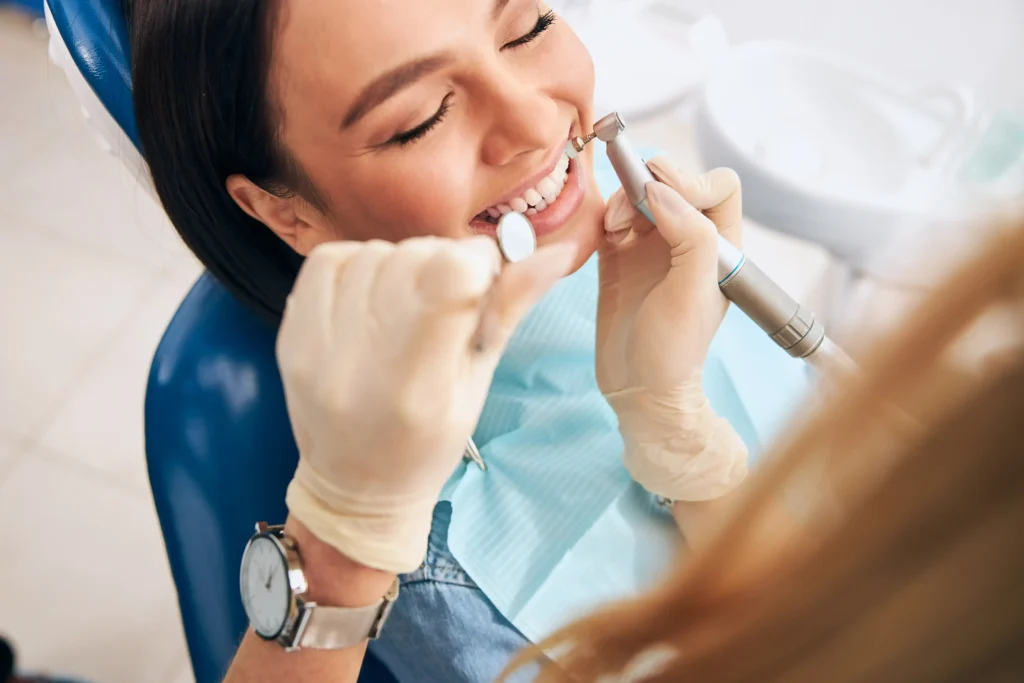
Dental cleaning removes plaque and tartar from teeth to prevent cavities and gum disease. It ensures oral health and fresh breath. Regular dental cleanings are essential for maintaining optimal oral health. They involve professional removal of plaque and tartar that regular brushing can’t eliminate. Cleanings help prevent cavities, gum disease, and other dental issues. Dentists recommend professional cleanings every six months. This routine care keeps your teeth and gums healthy, reducing the risk of more serious dental problems. Cleanings also contribute to fresher breath and a brighter smile. Investing in regular dental cleanings supports long-term oral health and overall well-being. Make dental cleanings a priority in your oral hygiene routine. Regular visits to your dentist ensure a healthy, confident smile. The Limits Of At-home Care At-home dental care has its limitations. Professional cleanings remove plaque and tartar that home routines miss. Regular dentist visits are essential for optimal oral health. Regular brushing and flossing are essential. Yet, they can’t replace professional dental cleanings. Let’s explore why at-home care has its limits. Plaque And Tartar Buildup Even with meticulous brushing, plaque can still accumulate. Here’s why at-home care can’t eliminate it entirely: Missed Spots: Hard-to-reach areas, like between teeth, often get overlooked. Tartar Formation: Plaque hardens into tartar, which only dental tools can remove. Deep Cleaning Needs Surface cleaning is good, but deeper layers need professional attention. This ensures optimal oral health: Subgingival Cleaning: Beneath the gumline needs specialized tools. Removal of Stubborn Debris: Some particles cling to teeth despite regular brushing. Identifying Hidden Issues A dentist can spot problems early. They see what your mirror doesn’t: Cavities: Early-stage cavities are often invisible to the untrained eye. Gum Disease: Subtle signs of gum disease require a professional diagnosis. Professional Tools And Techniques Dentists use advanced tools for thorough cleaning. These tools reach beyond what a toothbrush can: Ultrasonic Scalers: Break up plaque and tartar with sound waves. Polishing: Removes stains and smooths teeth surfaces. Personalized Advice Your dentist offers advice tailored to your needs. This personalized approach helps you maintain better oral health: Customized Brushing Techniques: Adjustments based on your dental condition. Product Recommendations: Specific toothpaste or mouthwash that suits your needs. Preventing Major Issues Regular dental visits prevent bigger problems. Early intervention saves you from extensive treatments: Early Detection: Catches issues before they escalate. Cost Savings: Prevents expensive procedures down the line. Fresher Breath Professional cleanings improve your breath significantly. They remove the bacteria that cause bad breath: Plaque Removal: Eliminates odor-causing bacteria. Deep Cleaning: Reaches areas that trap odor. Enhanced Overall Health Oral health impacts your overall well-being. Regular cleanings contribute to better health: Reduces Inflammation: Lessens the risk of systemic diseases. Heart Health: Links between oral health and heart disease are well-documented. Prevent And Eliminate Plaque And Tartar Regular dental cleaning prevents and eliminates plaque and tartar, ensuring a healthy and bright smile. Professional cleanings reach areas brushing might miss, reducing the risk of cavities and gum disease. Keeping a bright and healthy smile requires regular dental cleanings. This essential practice helps prevent and eliminate plaque and tartar buildup, ensuring your teeth stay strong and your gums healthy. What Is Plaque? Plaque is a sticky film that forms on your teeth. It harbors bacteria that can lead to gum disease and tooth decay. How Tartar Forms When plaque isn’t removed, it hardens into tartar. Tartar is tougher to eliminate and can only be removed by a dental professional. Preventing Plaque Buildup To maintain oral health, it’s vital to prevent plaque from forming. Here are some effective strategies: Brushing twice daily: Removes plaque before it hardens. Flossing daily: Cleans between teeth where brushes can’t reach. Using mouthwash: Helps kill bacteria and freshens breath. Regular dental visits: Professional cleanings and check-ups. Benefits Of Removing Tartar Removing tartar offers numerous benefits. Let’s explore a few: Prevents cavities: Tartar can erode enamel and cause decay. Reduces gum disease risk: Hardened plaque irritates gums, leading to gingivitis. Fresher breath: Tartar buildup often results in bad breath. Better overall health: Oral health impacts cardiovascular and systemic health. Professional Dental Cleaning Professional cleanings are essential for maintaining oral health. Dentists use specialized tools to remove plaque and tartar effectively. Home Care Tips Maintaining oral hygiene at home is crucial. Consider these tips to keep your teeth in top shape: Use a soft-bristled toothbrush: Gentle on gums but effective on plaque. Replace your toothbrush every 3 months: Worn bristles don’t clean well. Eat a balanced diet: Nutrients strengthen teeth and gums. Signs You Need A Cleaning Knowing when to visit the dentist for a cleaning is important. Watch for these signs: Persistent bad breath: Indicates plaque and tartar buildup. Gum inflammation: Red, swollen gums need professional care. Tooth sensitivity: Plaque and tartar can cause enamel erosion. Long-term Benefits Regular dental cleanings offer long-term benefits for your oral health: Prolongs tooth life: Prevents decay and gum disease. Saves money: Avoids costly dental treatments down the line. Boosts confidence: Clean teeth enhance your smile. Maintaining a consistent dental hygiene routine, combined with professional cleanings, ensures a healthier mouth and a brighter smile. Prevent Tooth Decay Regular dental cleaning helps prevent tooth decay by removing plaque and tartar buildup. Professional cleanings ensure healthier gums and stronger teeth. Maintaining good oral hygiene is crucial for a healthy smile. Regular dental cleanings play a vital role in preventing tooth decay. Let’s explore how professional cleanings help keep your teeth strong and decay-free. Removal Of Plaque And Tartar Plaque and tartar buildup can lead to tooth decay. During a dental cleaning, a hygienist removes these harmful substances: Plaque removal: Soft, sticky film of bacteria that forms on teeth. Tartar removal: Hardened plaque that can only be removed by a dentist. Strengthening Tooth Enamel Professional cleanings often include fluoride treatments. These treatments strengthen tooth enamel: Fluoride application: A mineral that helps prevent cavities. Enamel reinforcement: Makes teeth more resistant to acid attacks. Identifying Early Signs Of Decay Regular dental visits allow early detection of potential problems. Hygienists and dentists can spot decay
What To Do When Your Child Has A Cavity
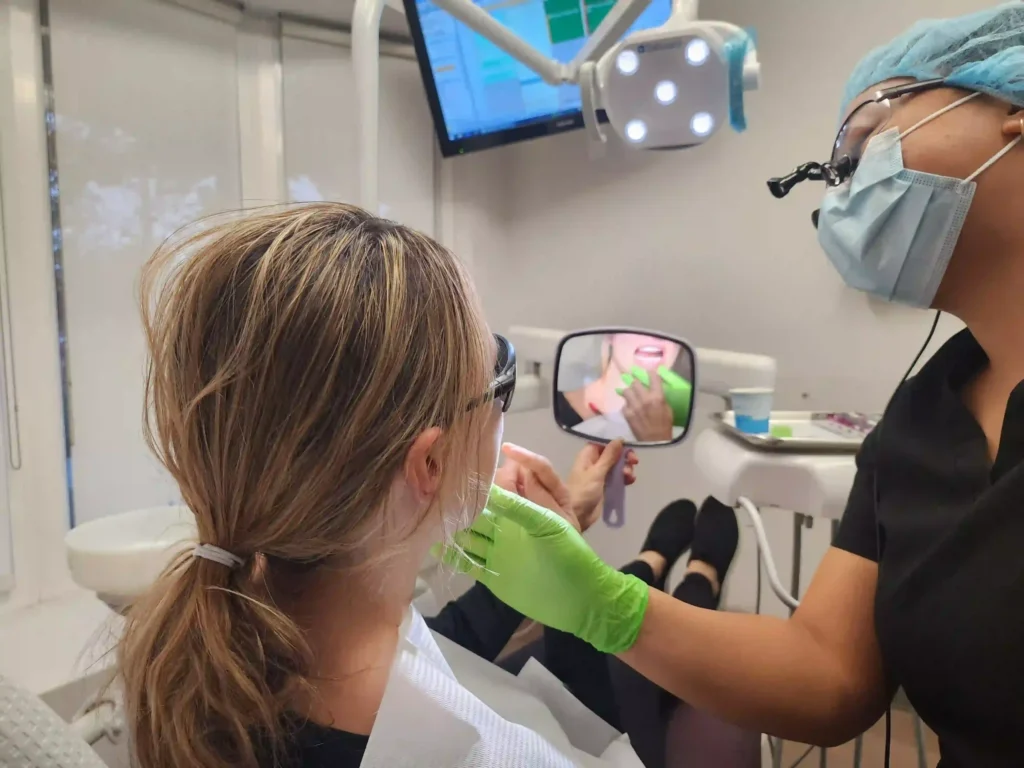
As a parent, there’s nothing quite as concerning as finding out your child has a cavity. Cavities, also known as tooth decay, are one of the most common health problems affecting children today. In fact, the Centers for Disease Control and Prevention (CDC) reports that nearly 1 in 5 children aged 5 to 11 years have at least one untreated decayed tooth. While discovering a cavity in your child’s mouth can be stressful, it’s important to remember that cavities are very treatable, especially when caught early. By taking the right steps, you can help your child get their oral health back on track and prevent further decay. In this blog post, we’ll cover everything you need to know about what to do when your child has a cavity, from understanding the causes to navigating the treatment process. With the right knowledge and approach, you can help your child overcome this common dental issue and develop healthy oral habits that will last a lifetime. Understanding Cavities in Children Before we dive into the steps to address a cavity, it’s helpful to first understand what causes them and how they develop in children. Cavities are essentially areas of permanent damage to the hard surface of a tooth. They are caused by a combination of factors, including: Bacteria: Our mouths naturally contain many types of bacteria, some of which produce acids that can erode tooth enamel and lead to cavities if not properly managed. Frequent Snacking: Frequent snacking, especially on sugary or starchy foods, provides a consistent food source for cavity-causing bacteria. This allows them to produce acids that attack the teeth. Inadequate Brushing: If teeth are not thoroughly brushed and flossed on a regular basis, food particles and plaque can build up, leading to decay. Dry Mouth: Saliva helps wash away food and neutralize acid, so children with a chronically dry mouth are more susceptible to cavities. Fluoride Deficiency: Fluoride is a mineral that strengthens tooth enamel and prevents cavities. Children who don’t get enough fluoride from sources like toothpaste, water, or supplements are at higher risk. Cavities typically start small, appearing as tiny holes or spots on the tooth surface. If left untreated, they can grow larger and deeper, eventually reaching the inner layers of the tooth and causing pain, infection, and other serious problems. The good news is that cavities are highly preventable with proper oral hygiene and regular dental care. However, if a cavity does develop, it’s important to address it promptly to stop the decay from progressing. Steps to Take When Your Child Has a Cavity Schedule a Dental Appointment: The first step is to make an appointment with your child’s dentist as soon as possible. Catching and treating cavities early is crucial, as small cavities are much easier and less expensive to fix than large, deep ones. Your dentist will thoroughly examine your child’s teeth and determine the best course of treatment based on the size and location of the cavity. They may also take X-rays to get a better look at the extent of the decay. Discuss Treatment Options: Once the dentist has assessed the cavity, they will explain the available treatment options. The most common approach for children is a dental filling, where the decayed portion of the tooth is removed and replaced with a tooth-colored material. In some cases, if the cavity is very deep or the tooth is severely damaged, the dentist may recommend a root canal or even tooth extraction. While these procedures may sound daunting, they are often necessary to prevent the spread of infection and further damage. Be sure to ask the dentist any questions you or your child may have about the treatment process, including what to expect during the procedure, how long it will take, and any potential discomfort or side effects. Prepare Your Child: Helping your child feel calm and prepared for their dental appointment can go a long way in making the experience less stressful. Here are some tips: Explain the process in a simple, age-appropriate way, emphasizing that the dentist is there to help and that it won’t hurt. Role-play the appointment at home, using a toothbrush or other toy as a “dental tool.” Bring a favorite toy, book, or comfort item to the appointment to help your child feel secure. Praise and reward your child for their bravery and cooperation throughout the process. Follow Aftercare Instructions: After the cavity is treated, be sure to follow any aftercare instructions provided by the dentist. This may include: Avoiding certain foods or drinks for a period of time Gently brushing and flossing the affected area Using a special toothpaste or mouthwash Scheduling a follow-up appointment to monitor the progress Adhering to these instructions is crucial for ensuring the filling or other treatment is successful and preventing further decay or complications. Establish Healthy Oral Habits: Once the immediate cavity issue has been addressed, it’s important to focus on preventing future cavities. This involves: Encouraging your child to brush their teeth twice a day for two minutes each time, using a soft-bristled toothbrush and fluoride toothpaste. Helping your child floss once a day, or using floss picks or other interdental cleaners. Limiting sugary and starchy snacks, and providing healthier options like fresh fruits and vegetables. Ensuring your child is getting enough fluoride, either through fluoridated water, supplements, or professional fluoride treatments. Scheduling regular dental checkups and cleanings every six months. By consistently practicing good oral hygiene and making dental care a priority, you can help your child avoid future cavities and maintain a healthy, beautiful smile. Coping with Dental Anxiety For many children (and adults!), the prospect of going to the dentist can be a source of significant anxiety and fear. This is a completely normal reaction, and it’s important to validate your child’s feelings and work with them to overcome their dental anxiety. Here are some strategies that can help: Communicate Openly: Encourage your child to express their concerns and fears about the dental visit. Listen without
How Can Crooked Teeth Impact Your Overall Health

Crooked teeth refer to teeth that are misaligned or do not fit together properly. They can affect appearance and oral health. Crooked teeth are a common dental issue affecting many individuals. Misaligned teeth can lead to various problems, including difficulty in chewing, speech impediments, and a higher risk of tooth decay and gum disease. Genetics, thumb-sucking during childhood, and injuries can contribute to this condition. Orthodontic treatments, such as braces or clear aligners, are effective for correcting crooked teeth. Regular dental check-ups and maintaining good oral hygiene are essential to prevent complications. Addressing crooked teeth improves dental health and boosts self-confidence by enhancing one’s smile. The Impact Of Crooked Teeth Many people have crooked teeth, and they can affect our lives in many ways. The impact of crooked teeth goes beyond just how they look. They can cause physical problems and affect our mental health. Let’s explore the physical and psychological effects of crooked teeth. Physical Effects Crooked teeth can lead to various physical problems. First, they make it hard to clean your teeth properly. This can cause tooth decay and gum disease. Tooth Decay: Food particles get stuck in the gaps, leading to cavities. Gum Disease: Misaligned teeth can cause your gums to become swollen and infected. Another issue is difficulty in chewing food. Misaligned teeth don’t fit together properly. This can lead to poor digestion. Speech problems are also common with crooked teeth. They can make it hard to pronounce certain words. This is especially true for kids learning to talk. Below is a table summarizing the physical effects: Issue Description Tooth Decay Food particles get stuck, causing cavities. Gum Disease Swollen and infected gums due to misalignment. Difficulty Chewing Teeth don’t fit together, leading to poor digestion. Speech Problems Hard to pronounce certain words. Psychological Effects Crooked teeth can also impact our mental health. Many people feel self-conscious about their smile. They might avoid smiling or laughing in public. This can lead to low self-esteem. Feeling bad about your teeth can make you feel bad about yourself. Kids might get teased at school, which can hurt their confidence. Adults may find it hard to socialize. They might avoid social events or meeting new people. This can lead to feelings of isolation and loneliness. Below are some common psychological effects: Self-Consciousness: Avoiding smiling or laughing. Low Self-Esteem: Feeling bad about oneself. Social Isolation: Avoiding social events. Loneliness: Feeling isolated from others. Addressing crooked teeth can improve both physical and mental health. Seeking treatment can make a big difference in your overall well-being. Causes Of Crooked Teeth Crooked teeth can impact your smile and oral health. Understanding the causes of crooked teeth can help you prevent and address this issue. Below are some of the main factors that contribute to crooked teeth. Genetics Genetics play a significant role in the formation of crooked teeth. If your parents or grandparents had crooked teeth, you might inherit this trait. Some genetic factors that lead to crooked teeth include: Jaw Size: Small jaws can cause teeth to crowd and become misaligned. Tooth Size: Large teeth may not fit well in a small jaw, leading to crooked teeth. Inherited Dental Conditions: Conditions like overbite, underbite, and crossbite can be passed down through families. Understanding your family’s dental history can help you predict and manage potential dental issues. If crooked teeth run in your family, regular dental check-ups are essential. Poor Oral Habits Poor oral habits during childhood can lead to crooked teeth. Habits that contribute to misaligned teeth include: Thumb Sucking: Prolonged thumb sucking can push teeth out of alignment. Tongue Thrusting: Pressing the tongue against the teeth can cause them to move. Using a Pacifier: Extended use of pacifiers can impact the alignment of the teeth. Mouth Breathing: Breathing through the mouth instead of the nose can affect the jaw’s development. Parents should monitor and address these habits early to prevent long-term dental issues. Encouraging good oral habits can help ensure proper dental alignment. Jaw Size And Tooth Size Discrepancy Jaw size and tooth size discrepancies are common causes of crooked teeth. When the jaw and teeth sizes do not match, teeth can become misaligned. Factors include: Factor Description Small Jaw A small jaw may not have enough space for all teeth, causing crowding. Large Teeth Large teeth may not fit properly in a small jaw, leading to misalignment. Jaw Growth Discrepancies Uneven growth of the upper and lower jaws can cause bite issues and crooked teeth. Regular dental visits can help identify and address these discrepancies early. Orthodontic treatments, such as braces or retainers, can correct alignment issues caused by jaw and tooth size discrepancies. Treatment Options For Crooked Teeth Having crooked teeth can impact your smile and oral health. There are several treatment options available to straighten crooked teeth. Each method has its benefits and suitability depending on the severity of the misalignment and individual preferences. Here, we’ll explore the most common treatment options for crooked teeth. Orthodontic Braces Orthodontic braces are a popular and effective solution for straightening teeth. They consist of metal brackets and wires that gradually move the teeth into the desired position. Braces can treat a variety of dental issues, including: Crowded teeth Overbites Underbites Crossbites Gaps between teeth The process of getting braces: Initial consultation with an orthodontist Placement of brackets and wires Regular adjustments to tighten the wires Wearing the braces for 1-3 years, depending on the case Post-treatment retainers to maintain the new position Advantages: Effective for severe misalignment Durable and long-lasting Customizable with colored bands Disadvantages: Visible metal brackets Can cause discomfort Requires regular orthodontic visits Clear Aligners Clear aligners are a modern alternative to traditional braces. These are transparent, removable trays that fit snugly over your teeth. Aligners are designed to gradually shift your teeth into the desired position. Some popular brands include Invisalign and Clear Correct. Benefits of clear aligners: Nearly invisible Removable for eating and cleaning Comfortable with no metal parts The treatment process: Consultation with a dental
Tongue Health 101: The Unsung Hero Of Your Mouth
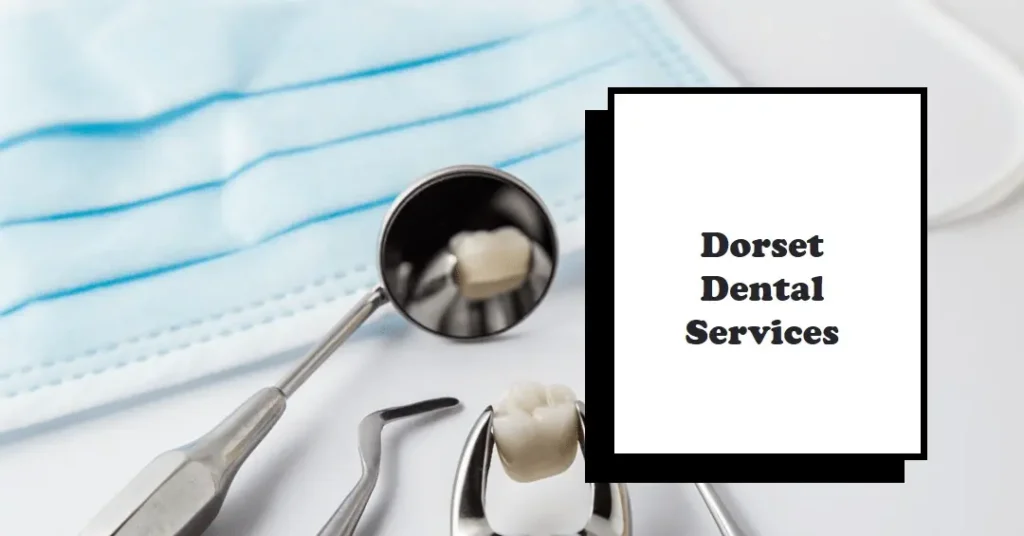
A healthy tongue is pink with a thin white coating. It should be free of sores or discoloration. Tongue health is crucial for overall well-being. The tongue helps with tasting, chewing, swallowing, and speaking. A healthy tongue is a good indicator of your general health. Various conditions like dehydration, infections, or vitamin deficiencies can affect your tongue. Maintaining tongue hygiene is essential to prevent issues such as bad breath or oral infections. Regular brushing, staying hydrated, and a balanced diet contribute to tongue health. Avoiding excessive alcohol and tobacco use also helps keep your tongue healthy. If you notice persistent changes in your tongue’s appearance or experience discomfort, consult a healthcare professional for proper diagnosis and treatment. The Importance Of Tongue Health The tongue plays a crucial role in our daily lives. It helps us speak, taste, and chew food. Maintaining tongue health is essential for overall well-being. A healthy tongue can prevent various health issues and enhance our quality of life. Impact On Overall Health A healthy tongue is important for effective communication. It helps in forming words and sounds. Poor tongue health can lead to speech problems. Digestion begins in the mouth. The tongue helps in chewing and swallowing food. If the tongue is unhealthy, it can affect digestion and nutrient absorption. Oral Hygiene: A clean tongue prevents bad breath and infections. Immune System: The tongue’s surface can indicate infections or deficiencies. Overall Health Monitoring: Doctors often check the tongue to diagnose health issues. Mental Health can also be impacted by tongue health. An unhealthy tongue can cause discomfort and pain, leading to stress and anxiety. Consider the following table for a quick summary: Aspect Impact Speech Essential for clear communication Digestion Starts the digestion process Oral Hygiene Prevents bad breath and infections Immune System Indicates infections or deficiencies Mental Health Prevents discomfort and stress Common Tongue Health Issues Several common tongue health issues can affect our daily lives. Knowing them can help in early diagnosis and treatment. Geographic Tongue: This condition causes map-like patches on the tongue. It can be uncomfortable but is usually harmless. Symptoms: Red, smooth patches on the tongue. Causes: Often unknown, possibly genetic. Oral Thrush: This is a yeast infection of the mouth. It causes white patches on the tongue and inside the cheeks. Symptoms: White or yellow patches. Causes: Overgrowth of Candida fungus. Black Hairy Tongue: This condition makes the tongue look dark and hairy. Poor oral hygiene often causes it. Symptoms: Dark, furry appearance. Causes: Lack of brushing, tobacco use. Burning Mouth Syndrome: This causes a burning sensation on the tongue. It can be very painful. Symptoms: Burning, tingling, or numbness. Causes: Often unknown, possibly due to nerve damage. Maintaining good tongue health can prevent these issues. Regular brushing, avoiding tobacco, and eating a balanced diet are key. Signs And Symptoms Of Poor Tongue Health Your tongue can tell a lot about your overall health. Many health issues show up on the tongue first. Paying attention to your tongue can help you catch problems early. This section covers the signs and symptoms of poor tongue health. Learn what to look for so you can take action if needed. Changes In Color A healthy tongue is usually pink. Changes in color can indicate health issues. A white tongue may suggest oral thrush or leukoplakia. A red tongue can point to a vitamin deficiency or scarlet fever. A black, hairy tongue is often due to poor oral hygiene or smoking. Here are some common color changes and what they might mean: White patches: Oral thrush, leukoplakia Bright red: Vitamin deficiency, scarlet fever Black or brown: Poor hygiene, smoking Yellow: Fever, dehydration Pale: Anemia, poor circulation If you notice a change in tongue color that lasts more than a few days, consult a healthcare provider. They can help diagnose the issue. Pain And Sensitivity Pain or sensitivity in the tongue can be a sign of various health problems. Burning tongue syndrome causes a burning sensation without any visible sores. Canker sores are small, painful ulcers. They often appear due to stress or minor injuries. Glossitis causes swelling and changes in the color and texture of the tongue. Here are some common causes of tongue pain and sensitivity: Burning tongue syndrome: Hormonal changes, nutritional deficiencies Canker sores: Stress, minor injuries, acidic foods Glossitis: Infections, allergies, irritants Injuries: Biting the tongue, hot foods or drinks Oral cancer: Persistent pain, sores that don’t heal If you experience ongoing pain or sensitivity, seek medical advice. Early detection can prevent more serious issues. Factors Affecting Tongue Health The health of your tongue is vital for overall well-being. Many factors influence tongue health, including diet, nutrition, and oral hygiene habits. Understanding these factors can help you maintain a healthy tongue and prevent potential issues. Diet And Nutrition Diet and nutrition play a crucial role in tongue health. A balanced diet ensures your tongue gets the necessary nutrients for optimal function. Here are some essential nutrients for a healthy tongue: Vitamin B12: Deficiency can lead to tongue inflammation and soreness. Iron: Low iron levels can cause a pale or sore tongue. Zinc: Vital for taste bud function and healing. Eating a variety of foods can help meet these nutritional needs. Incorporate the following into your diet: Food Nutrient Lean meats Iron, Zinc Dairy products Vitamin B12 Green leafy vegetables Iron Nuts and seeds Zinc Avoiding certain foods can also benefit tongue health. Spicy foods, excessive sugar, and acidic drinks can irritate the tongue. Drinking plenty of water helps keep the tongue moist and free from harmful bacteria. Oral Hygiene Habits Proper oral hygiene is essential for a healthy tongue. Good habits can prevent infections and other issues. Follow these tips to maintain excellent oral hygiene: Brush your tongue: Use a toothbrush or tongue scraper to remove bacteria. Floss daily: Flossing removes food particles and plaque that brushing may miss. Rinse with mouthwash: Antibacterial mouthwash can kill bacteria and freshen breath. Regular dental check-ups are also important. Your dentist can spot
The Importance Of Good Oral Hygiene During Pregnancy
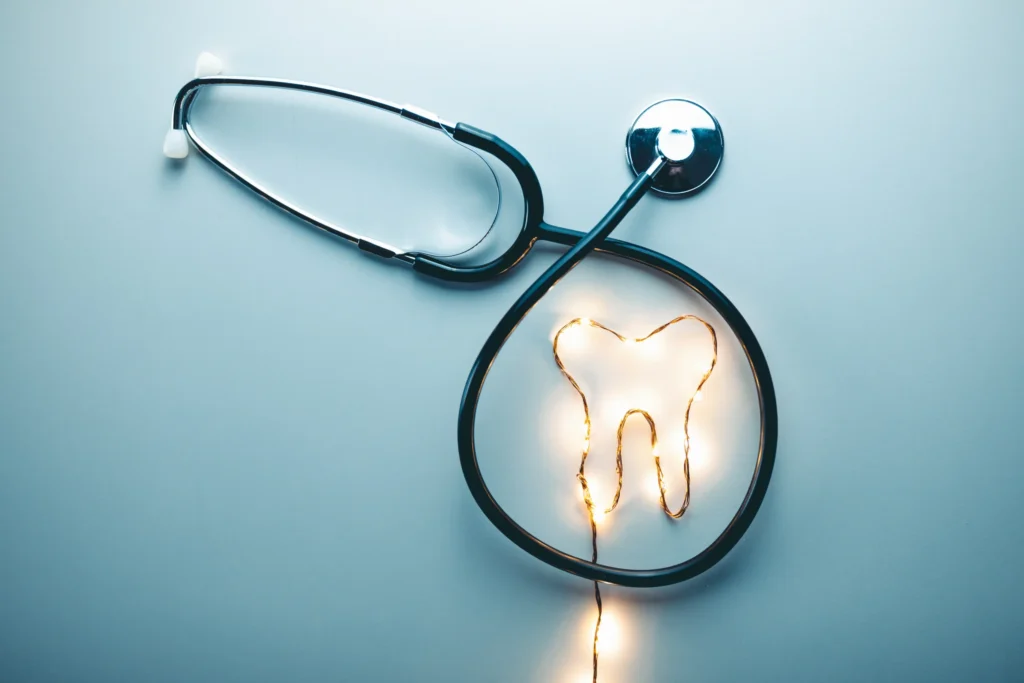
Oral hygiene involves keeping the mouth, teeth, and gums clean to prevent disease. This practice includes regular brushing and flossing. Oral hygiene is crucial for maintaining overall health. Regular brushing and flossing remove plaque, a sticky film of bacteria that can cause cavities and gum disease. Dentists recommend brushing twice daily with fluoride toothpaste and flossing at least once a day. Regular dental check-ups are also important for early detection of potential issues. Proper oral hygiene can prevent bad breath, tooth decay, and gum disease. It also contributes to overall health, as poor oral health can lead to other serious conditions like heart disease and diabetes. Consistent oral care habits ensure a healthy, bright smile and contribute to long-term well-being. The Importance Of Oral Hygiene Oral hygiene is about keeping your mouth clean and healthy. It helps your teeth and gums stay in good shape. Good oral hygiene means brushing, flossing, and visiting the dentist regularly. This habit is essential for everyone, from kids to adults. Let’s explore why oral hygiene is so important. Preventing Dental Issues Good oral hygiene can prevent many dental problems. Brushing your teeth twice a day removes plaque. Plaque is a sticky film of bacteria. If plaque stays on your teeth, it can cause tooth decay and gum disease. Here are some key points: Tooth Decay: Plaque turns sugars from food into acids. These acids eat away at your tooth enamel, causing cavities. Gum Disease: Plaque can also cause gums to become red, swollen, and bleed. This is called gingivitis. If not treated, it can turn into a more serious gum disease called periodontitis. Bad Breath: Poor oral hygiene can lead to bad breath. Bacteria in your mouth produce unpleasant odors. Flossing helps remove food particles and plaque between teeth. This is where your toothbrush can’t reach. Regular dental check-ups are important too. Dentists can spot problems early and give your teeth a deep clean. Activity Frequency Brushing Twice daily Flossing Once daily Dental Check-up Every 6 months Impact On Overall Health Oral hygiene affects more than just your mouth. Poor oral health can impact your whole body. Here are some ways: Heart Disease: Bacteria from gum disease can enter your bloodstream. This can cause inflammation and lead to heart disease. Diabetes: Gum disease can make it harder to control blood sugar levels. People with diabetes are more likely to have gum disease. Respiratory Infections: Bacteria from your mouth can be inhaled into your lungs. This can cause infections like pneumonia. Oral health is linked to your overall health. Keeping your mouth healthy helps keep your body healthy. Remember these tips: Brush and floss daily. Eat a balanced diet and limit sugary snacks. Visit the dentist regularly for check-ups and cleanings. Taking care of your oral hygiene is simple but very important. It helps you live a healthier life. Common Oral Hygiene Practices Maintaining good oral hygiene is essential for a healthy smile and fresh breath. Common oral hygiene practices help prevent cavities, gum disease, and bad breath. Let’s explore some effective techniques to keep your mouth clean and healthy. Brushing Techniques Proper brushing techniques are crucial for removing plaque and food particles. Here are some tips to brush your teeth effectively: Use a soft-bristled toothbrush: It protects your gums and tooth enamel. Brush twice a day: Do it in the morning and before bed to prevent plaque buildup. Brush for two minutes: Ensure you clean all areas of your mouth. Use fluoride toothpaste: It strengthens your teeth and prevents cavities. Follow these steps for a thorough brushing: Place your toothbrush at a 45-degree angle to your gums. Gently move the brush back and forth in short strokes. Brush the outer, inner, and chewing surfaces of your teeth. Brush your tongue to remove bacteria and keep your breath fresh. Flossing Tips Flossing removes food particles and plaque between teeth where your toothbrush can’t reach. Follow these tips for effective flossing: Use about 18 inches of floss: Wind most of it around your middle fingers, leaving an inch or two to work with. Hold the floss tightly: Use your thumbs and index fingers to guide it between your teeth. Curve the floss: Form a C-shape around each tooth and slide it up and down gently. Don’t forget the back teeth: They are just as important as the front ones. Mouthwash Recommendations Mouthwash can help reduce bacteria, freshen breath, and protect against cavities. Here are some recommendations for using mouthwash: Choose the right mouthwash: Look for one with fluoride to strengthen enamel or one with antibacterial properties to reduce plaque. Use the correct amount: Follow the instructions on the bottle, usually around 20 ml. Swish for 30 seconds: Ensure the mouthwash reaches all areas of your mouth. Avoid eating or drinking: Do so for at least 30 minutes after using mouthwash to let it work effectively. Incorporating these common oral hygiene practices into your daily routine will help you maintain a healthy mouth and a beautiful smile. Factors Affecting Oral Health Maintaining good oral hygiene is crucial for a healthy smile and overall well-being. Several factors affect oral health, impacting everything from the appearance of your teeth to the freshness of your breath. Understanding these factors can help you take better care of your oral hygiene. Diet And Nutrition A balanced diet plays a vital role in maintaining healthy teeth and gums. Foods high in sugar and starches contribute to tooth decay. Bacteria in the mouth feed on these substances, producing acids that can erode tooth enamel. Here are some tips to improve your diet for better oral health: Eat more fruits and vegetables. They are high in water and fiber, which help clean teeth. Choose dairy products. Milk, cheese, and yogurt provide calcium and phosphates, essential for strong teeth. Avoid sugary snacks. Opt for healthier options like nuts or cheese. Drink plenty of water. Water helps wash away food particles and keeps saliva levels high. Certain vitamins and minerals are essential for oral health: Nutrient
How Often Should You Get A Dental Checkup
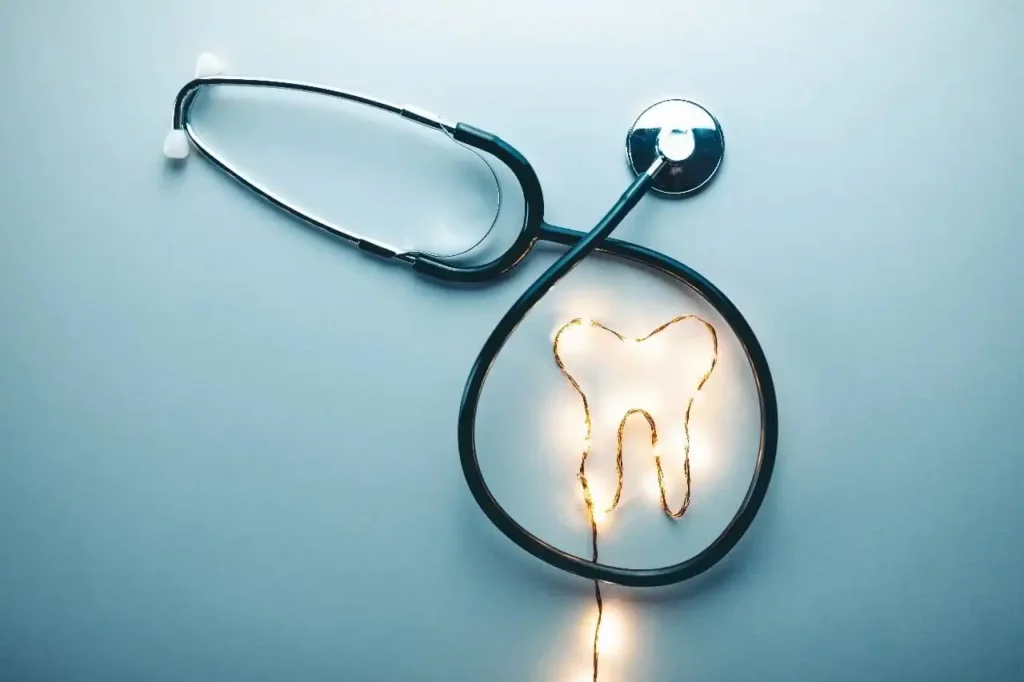
A dental checkup is a routine examination of your teeth, gums, and mouth by a dentist. It helps detect and prevent oral issues. Regular dental checkups are crucial for maintaining optimal oral health. During these visits, dentists perform thorough examinations, cleanings, and sometimes X-rays to identify any potential problems early. Preventive care is essential to avoid more serious and costly dental issues in the future. These appointments also provide an opportunity to discuss any concerns, receive personalized advice, and learn proper oral hygiene techniques. By scheduling regular checkups, you ensure your teeth and gums remain healthy, reducing the risk of cavities, gum disease, and other dental problems. Consistent visits to your dentist contribute significantly to overall well-being and a confident smile. The Importance Of Regular Dental Checkups Regular dental checkups are crucial for maintaining a healthy smile. They help in preventing dental problems before they become serious. Visiting the dentist twice a year can save you pain and money. Here’s why regular dental checkups are essential. Preventive Care Preventive care is the best way to keep your teeth and gums healthy. Regular checkups include professional cleanings. These cleanings remove plaque and tartar. This helps prevent cavities and gum disease. The dentist also provides fluoride treatments. These treatments strengthen your teeth. Sealants may be applied to protect your molars. Preventive care is the first step to a lifetime of healthy teeth. Early Detection Of Issues Regular checkups allow for the early detection of issues. Dentists can spot problems before they worsen. Early detection means easier and less expensive treatment. This includes finding cavities, gum disease, and oral cancer. Here are some common issues that can be detected early: Cavities Gum disease Oral cancer Tooth decay During your checkup, X-rays may be taken. X-rays help find problems below the surface. This ensures your teeth and gums are healthy inside and out. Issue Detection Method Importance Cavities Visual Exam, X-rays Prevents tooth loss Gum Disease Gum Measurements Prevents tooth and bone loss Oral Cancer Visual Exam Saves lives What To Expect During A Dental Checkup A dental checkup is important for your oral health. Knowing what to expect can ease any worries. Here’s a simple guide to help you understand the process. Oral Examination The dentist will start with an oral examination. They will check your teeth and gums. They look for signs of cavities, gum disease, and other issues. Here’s what happens during an oral examination: The dentist uses a small mirror to see all areas of your mouth. They may use a probe to check your gums. X-rays might be taken to see under the surface of your teeth. This helps the dentist find problems early. Early treatment prevents bigger issues later. Professional Cleaning After the examination, you will get a professional cleaning. This step helps remove plaque and tartar. The cleaning process includes: Scaling: The dentist uses special tools to remove tartar. Polishing: Your teeth are polished to remove stains. Flossing: The dentist will floss your teeth to ensure cleanliness. Professional cleaning keeps your mouth healthy. It also makes your teeth feel smooth and look shiny. Common Procedures During A Dental Checkup A dental checkup is not just about cleaning your teeth. It involves several important procedures to ensure your oral health. These procedures help in early detection and prevention of potential dental issues. Here are some common dental procedures you can expect during a dental checkup. X-rays X-rays are an essential part of a dental checkup. They help in viewing the hidden parts of your teeth and jaw. Dentists use X-rays to detect issues that are not visible during a physical examination. Detects cavities between teeth Identifies bone loss Checks for tumors or cysts X-rays are safe and involve minimal radiation exposure. They provide crucial information for your dental health. Cavity Detection Cavity detection is another key procedure during a dental checkup. Dentists use special tools to check for cavities. They look for soft spots on the enamel and signs of tooth decay. Visual inspection of teeth Probing with dental instruments Using laser cavity detection devices Early detection of cavities helps in quick treatment and prevents further damage. Gum Disease Evaluation Gum disease evaluation is crucial for maintaining overall oral health. Dentists check your gums for signs of gingivitis and periodontitis. Healthy gums are essential for strong teeth. Signs Checked Importance Redness and swelling Indicates inflammation Bleeding gums Possible gum disease Pocket depth measurement Assesses gum health Regular gum evaluations help in preventing serious dental issues. Understanding these procedures can make your dental checkup less daunting. Regular checkups are important for maintaining a healthy smile. Benefits Of Regular Dental Checkups Regular dental checkups are vital. They keep your mouth healthy and prevent bigger health issues. Let’s explore the benefits of visiting your dentist regularly. Maintaining Oral Health Regular checkups help maintain your oral health. Dentists clean your teeth and remove plaque. They also check for cavities and gum disease. During a checkup, dentists can spot issues early. Early detection means easier treatment. This helps avoid pain and discomfort. Here are some key benefits: Teeth cleaning: Removes tartar and plaque. Prevents cavities: Stops tooth decay early. Gum health: Detects and treats gum disease. Fresh breath: Removes bacteria causing bad breath. Preventing Serious Health Conditions Regular dental checkups can prevent serious health conditions. Poor oral health links to heart disease and diabetes. Dentists can spot signs of these diseases early. They also check for oral cancer. Early detection saves lives. Dentists will examine your mouth, neck, and throat. This helps catch cancer early. Here are some health conditions dentists help prevent: Health Condition How Dental Checkups Help Heart Disease Detects early signs and reduces risk. Diabetes Spot warning signs and manage symptoms. Oral Cancer Early detection increases survival rates. Regular checkups are essential. They help maintain oral health and prevent serious diseases. Schedule your next dental appointment today. Choosing The Right Dentist Finding the right dentist is essential for your dental health. The right dentist can make your visits stress-free
Ways to Prevent Common Dental Issues
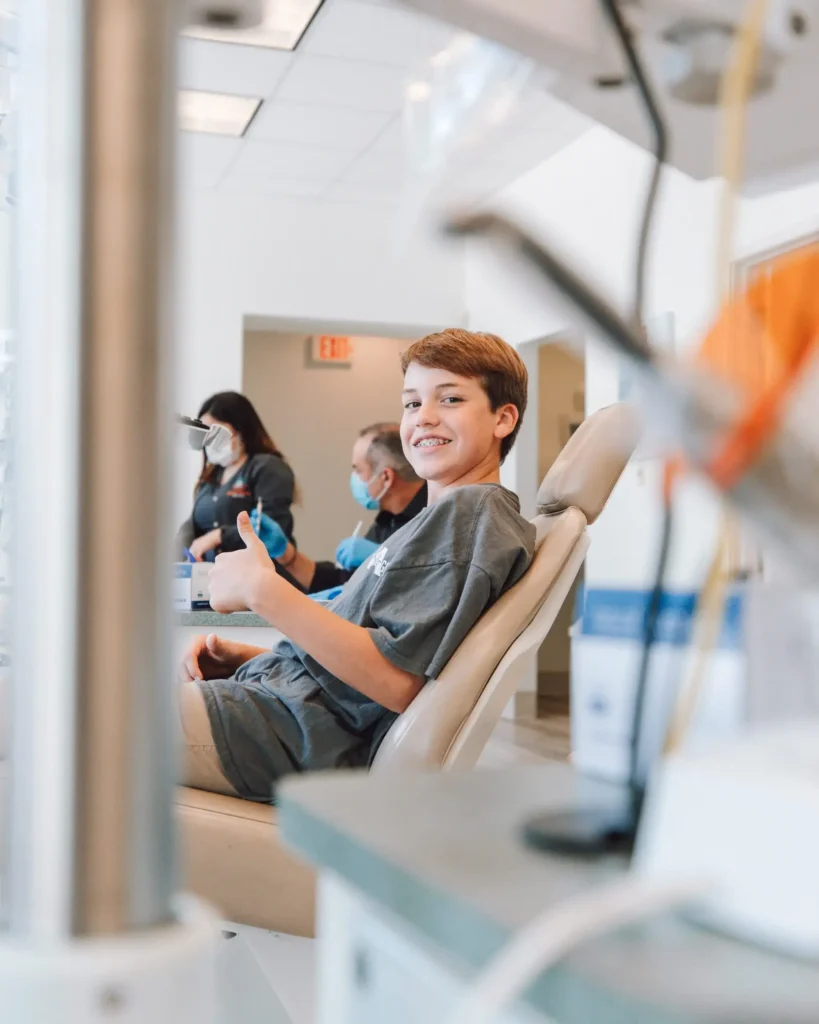
A dazzling, healthy smile boosts confidence and contributes immensely to overall well-being. Yet, dental problems remain a thorn in the side for many. In 2024, let’s make a commitment to prioritizing preventative dental care! I’m here to share the best strategies to keep cavities, gum disease, sensitivity, and other unpleasant issues at bay. Understanding the Enemies: Common Dental Problems Let’s break down the most frequent offenders when it comes to oral health: Cavities (Tooth Decay): Our mouths are teeming with bacteria. When those bacteria feast on sugars and starches, they produce acids that attack tooth enamel, leading to decay. Gum Disease: It begins subtly as gingivitis – red, swollen, and possibly bleeding gums. Untreated, it can progress to periodontitis, an infection that damages the soft tissue and bone supporting your teeth, potentially leading to tooth loss. Tooth Sensitivity: The protective enamel layer on your teeth can wear down over time, exposing the sensitive dentin underneath. This causes twinges of pain when you consume hot, cold, sweet, or acidic foods and drinks. Enamel Erosion: Frequent exposure to acids from food/drinks gradually dissolves tooth enamel, increasing the risk of decay and sensitivity. Bad Breath (Halitosis): While sometimes caused by certain foods, persistent bad breath could point to underlying dental problems, dry mouth, or other health conditions. The Power of Prevention: Your Smile-Saving Strategy The Dynamic Duo: Brushing & Flossing Brush twice a day for two minutes. Use a soft-bristled toothbrush and fluoride toothpaste to gently dislodge plaque and food debris. Floss once daily to clean away hidden gunk from between your teeth. Flossing is essential, even if it seems like a chore! Fuel Your Smile: A Tooth-Friendly Diet The food you eat profoundly impacts oral health. Limit sugary snacks, sodas, and processed foods. Instead, focus on: Fruits & Veggies: Crisp options like apples and carrots offer a natural “scrub” for your teeth Dairy Products: Cheese, yogurt, and milk are rich in calcium, crucial for strong enamel. Water: The ultimate tooth-friendly beverage. Water rinses debris and stimulates saliva production. Your Dentist: An Essential Ally Regular dental checkups and professional cleanings are non-negotiable. Your dentist detects potential issues long before they become major headaches and removes hardened tartar your toothbrush can’t handle. Extra Protection: Consider Sealants If you’re cavity-prone (especially back teeth), ask your dentist about sealants. These thin coatings act like armor for chewing surfaces. Harnessing the Latest Tech Modern dental tools can boost your prevention game: Electric Toothbrushes: Many models offer superior cleaning, timers, and pressure sensors to safeguard your gums. Apps: Find apps that track brushing time, provide technique tips, and even add a fun element! Advanced Tactics: Beyond the Basics Xylitol: The Sweet Solution This naturally occurring sweetener found in some chewing gums may inhibit cavity-causing bacteria. Dry Mouth: A Hidden Threat Insufficient saliva ups your risk of dental problems. Staying hydrated, chewing sugar-free gum, and talking to your doctor/dentist about medications contributing to dry mouth are key. Mouthwash Matters Choose a therapeutic mouthwash to target specific concerns like gum inflammation or sensitivity. Ask your dentist for recommendations. Don’t Ignore the Warning Signs Even the most diligent prevention routines aren’t foolproof. Watch out for concerning changes in your mouth: Persistent bad breath Bleeding gums that don’t improve with proper brushing/flossing Toothaches or lingering sensitivity Sores or discoloration in your mouth See your dentist right away – catching issues early makes treatment easier and less invasive! Oral Health = Overall Health: The Connection Taking care of your smile isn’t just about vanity! A healthy mouth positively impacts your entire body. Dental problems are linked to increased risks of: Heart disease Stroke Diabetes complications Respiratory problems By following these preventative strategies, you’re investing in a lifetime of confident smiles and a healthier, happier YOU! Also Read, Sleep Apnea treatment : Effective Tips for Better Sleep Understanding The Role of A Dentist in Scarborough Enhance Your Smile with Top Cosmetic Dentistry Services in Scarborough FAQs Are electric toothbrushes really better than manual ones? Studies generally show that electric toothbrushes can remove more plaque and reduce gum inflammation compared to manual brushing. If you struggle with proper technique, an electric toothbrush can be a game-changer. How often should I replace my toothbrush? Dentists recommend replacing your toothbrush (or electric toothbrush head) every 3-4 months, or sooner if the bristles look frayed. Does whitening toothpaste damage enamel? Most whitening toothpastes contain mild abrasives and work by removing surface stains. Used as directed, they are generally safe. However, if you have sensitive teeth, talk to your dentist about the best teeth whitening options for you. Is flossing really that important? Yes! Flossing removes plaque and food particles from between your teeth, where your toothbrush can’t reach. Skipping flossing increases your risk for cavities and gum disease. What can I do about bad breath? Brush and floss thoroughly, clean your tongue, drink enough water, and see your dentist regularly. Persistent bad breath may indicate an underlying health issue. Are there foods that are especially good for my teeth? Crunchy fruits and vegetables like apples and carrots act as natural tooth scrubbers. Dairy products rich in calcium strengthen your enamel. I’m afraid of the dentist. What can I do to feel more at ease? Communicate your fears to your dentist. Many dentists specialize in helping anxious patients. Relaxation techniques, sedation options, or breaking up treatment into shorter appointments can all help.
What Should You Do During A Dental Emergency
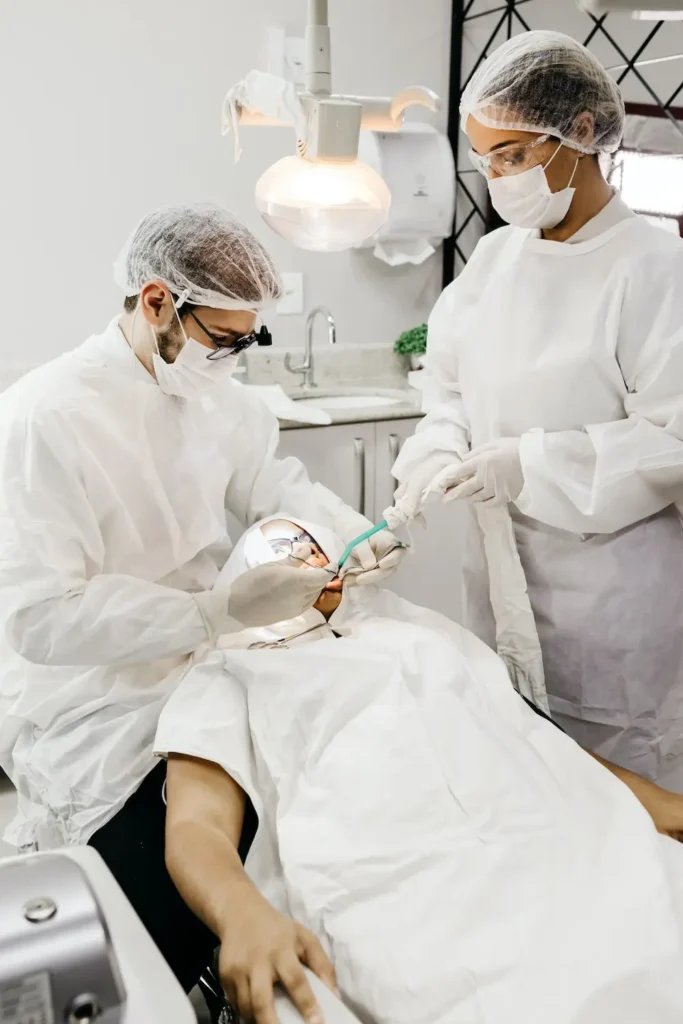
Dental emergencies can strike at any time, causing pain, discomfort, and even fear. Knowing what to do in these urgent situations is crucial for preserving your oral health and preventing further damage. As someone who’s experienced a fair share of tooth troubles, I want to help you navigate dental emergencies with confidence. What is Considered a Dental Emergency? Not every dental issue requires an emergency visit. Here are situations that demand immediate attention: Knocked-Out Tooth: Time is of the essence. If a permanent tooth gets knocked out, finding and preserving it can significantly impact the success of reimplantation. Severe Toothache: Intense, unrelenting tooth pain could signal an infection or abscess, which needs prompt dental care to prevent complications. Broken or Fractured Tooth: Sharp edges of a broken tooth can lacerate your tongue or cheeks. A dentist can smooth them down and assess the damage. Trauma to the Jaw: Any suspected jaw fractures or dislocations warrant an emergency room visit. Uncontrollable Bleeding: Excessive bleeding after dental work or oral injury might need professional management. What to Do: Step-by-Step Guide Stay Calm: It’s natural to feel anxious, but panicking won’t help. Taking deep breaths can help you think more clearly. Contact Your Dentist: This is your first port of call. Even if it’s beyond office hours, many dentists have emergency lines for situations like these. First Aid Measures: Follow your dentist’s instructions. In the meantime, here are some common first aid steps: Knocked-Out Tooth: Recover the tooth, holding it by the crown only. Rinse it gently with water if it is dirty. Try to place it back into its socket. If that’s not possible, keep it moist in milk or your saliva. Severe Toothache: Rinse your mouth with warm salt water. Apply a cold compress outside your cheek to manage swelling. Over-the-counter painkillers offer temporary relief. Bleeding: Apply clean gauze with firm pressure to the bleeding site for 15-20 minutes. If it doesn’t subside, go to the emergency room. Urgent Care or ER: If your dentist is unavailable, an urgent care center might offer emergency dental services. For severe injuries involving potential jaw damage or heavy bleeding, the emergency room is the best option. Prevention: The Best Solution While you can’t prevent every accident, good oral hygiene practices significantly reduce your risk of dental emergencies: Brush Twice Daily and Floss: The basics remove plaque and protect against cavities and infections. Regular Dental Checkups: Allow your dentist to catch issues early, preventing them from escalating. Mouthguards: If you participate in sports, a mouthguard can save your teeth from injury. Remember, You’re Not Alone Dental emergencies can be stressful, but knowing the right steps can make a huge difference in the outcome. Remember, your dentist in Scarborough and other healthcare professionals are there to help. Don’t hesitate to seek the care you need to restore your smile and well-being. Read Also, Comprehensive Guide to Dealing with Dental Emergencies at Home Understanding The Role of A Dentist in Scarborough Top 5 Questions To Ask Your Scarborough Dentist At Your Next Visit FAQs What if my tooth is chipped but not causing pain? Even a minor chip can weaken the tooth’s structure. A dentist can assess the extent of damage and recommend a fix to prevent further breakage. How do I preserve a knocked-out tooth if I can’t put it back in the socket? Milk is the best medium for storage. If milk isn’t available, use your own saliva (store the tooth in your cheek). Avoid storing it in plain water. Can I use over-the-counter pain medication for a severe toothache? Yes, OTC pain relievers like ibuprofen or acetaminophen provide temporary relief. However, don’t delay getting professional help as the infection causing the pain needs treatment. What if I’m not sure if my dental issue is an emergency? When in doubt, always call your dentist for guidance. They will be able to determine the severity of the issue and whether you need immediate care. Can an urgent care clinic treat a dental emergency? Some urgent care clinics offer basic emergency dental services. It’s always best to call them ahead and describe your situation. I’m traveling and have a dental emergency. What do I do? Contact your dentist; they might have partner clinics in your location. If not, check online resources or ask your hotel for recommendations on emergency dental care. How can I make dental emergencies less likely to happen? Prioritize excellent oral hygiene (brushing twice daily, flossing), wear a mouthguard during sports, and schedule regular dental checkups and cleanings.

